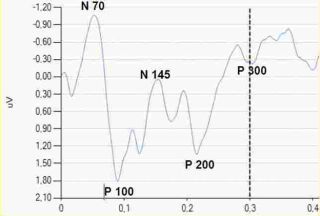Mindfulness
How Mindfulness and Focusing Attention Can Benefit Cognition
Mindfulness can lead to enhanced brain processing.
Posted June 28, 2023 Reviewed by Lybi Ma
Key points
- Repeated practice with focusing attention can lead to long-term changes in brain function.
- Mindfulness training on focusing attention works better than other training.
- This practice can bring significant improvements in performance on a sustained attention task.
Your Mindful Brain
Most of us know what is meant by the term mindfulness. The common understanding is that one’s focus is on the here and now, on what is present moment by moment. And, if you’ve ever tried mindful meditation, then you know the basics of the technique used to create a state of mindfulness, and likely you also know how hard it is to actually accomplish it. When someone talks about the practice of mediation, they seriously mean the word practice. It takes repeated practice with maintaining the focus on your attention on the here and now to be able to do it for more than just a moment or two.

Our minds are busy, and we are assailed with information coming in from our senses, begging to be processed by the brain, all the time. When you practice mindfulness, you practice sustaining your attention on just one aspect of the world around you, usually on your breath. In and out, slow and steady, repeatedly returning to monitoring your breath whenever your mind is distracted by other things going on. You repeatedly return your attention to just that one object, the breath. This repeated practice of focusing and re-focusing attention may be at the root of the benefits of mindful meditation.
The Benefits of Mindfulness
There are many rewards to mindful meditation. Your ability to sustain your attention improves, selective attention is improved, and executive control (being able to decide what to focus on) over what you are paying attention to improves, as does working memory (Spagna, Mackie, and Fan, 2015). Anxiety is decreased, sleep is improved, blood pressure is lowered and even our ability to cope with chronic pain is improved (National Institute of Health, 2021). New research has also linked mindfulness meditation practice to changes in the way that the brain processes information, which may help prevent the cognitive decline that can come with aging.
A group of researchers in Australia and Germany was interested in exploring how learning to control one’s attention through mindfulness meditation practice affected the way information is processed by the brain. And, because our ability to use our cognitive systems can be affected by aging, researchers (Isbel, Weber, Lagopoulos, Stefanidis, Anderson, and Summers, 2020) recruited a large group of older adults as participants to study the effects of attention training on cognition.
One group of participants received eight weeks of daily mindfulness meditation training. Another group received other, non-mindfulness-based training on focusing attention, playing a series of computer games for the same time period. At the end of the training period, both groups underwent what is known as an Event-Related Potential or ERP brain scan.
ERP Scans and Bottom-Up Processing

When you have an ERP you are first presented with a sensory stimulus that evokes a response from a sensory system, letting the brain know what happened out there in the world. Isbel and colleagues, recorded a visual ERP using a flash of light as their stimulus. As the visual system responds to that event, electrodes record a series of waves that peak at different times after the event. The latency (the time to the peak) of the recorded waves lets researchers know what part of the system is responding. The longer the latency, the farther up the system the cells responding are located. This is known as “bottom-up” processing; starting with a sensory receptor (the eyes) information is sent up to the central processing areas of the brain so that what happened can be determined.
Each wave is labeled according to how long, in milliseconds, after the event the wave peaked. N70 waves peak about 70 milliseconds after the event and wave P300 takes 300 milliseconds to peak. The later waves (P300) are interpreted as indicating the brain evaluating and categorizing the event.
Then, the participants were asked to continue either meditation practice or playing the games on the computer at home, not in the lab, for an additional six months. At the end of that six-month period of time, the ERPs were again collected.
Does Training Work?
The first ERPs recorded after eight weeks of training showed no changes in either group. However, after six months, the participants in the mindfulness-based meditation group showed significant improvements in performance on a sustained attention task, as well as changes in the ERP that indicated enhanced sensory processing by cells in the parietal-temporal regions of the brain. These changes were not seen in the computer-game training group. Interestingly, the participants trained in mindfulness meditation were significantly more likely to maintain their practice at home, on their own, than were the game-playing participants.
Isbel and colleagues concluded that repeated practice with mindfully pulling attention away from a distraction and back to a single focus, not only “enhanced efficiency within this bottom-up visual pathway” but might also be improving the physical connections in the brain, making the brain better able to efficiently process information.
References
Isbel, B., Weber, J., Lagopoulos, J., Stefanidis K., Anderson, H., and Summer, M.J. (2020). Neural changes in early visual processing after 6 months of mindfulness training in older adults. Nature Scientific Reports, 10, 21163, doi.org/10.1038/s41598-020-78343-w
National Institute of Health (2021). Mindfulness for your health. The benefits of living moment to moment. NIH News in Health Newsletter, Washington D.C., U.S. Government Printing Office.
Spagna, A., Mackie, M-A., and Fan, J. (2015). Supramodal executive control of attention. Frontiers in Psychology, 6, Article 65,


